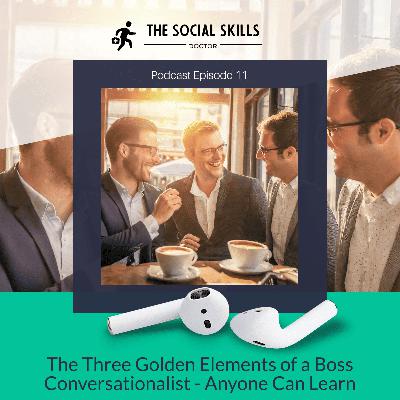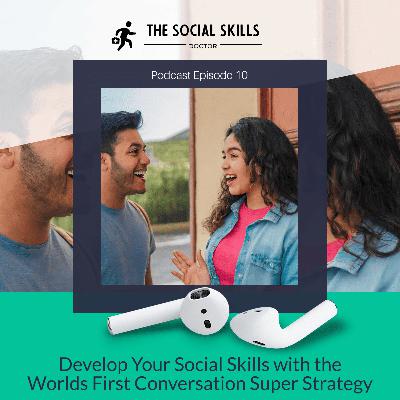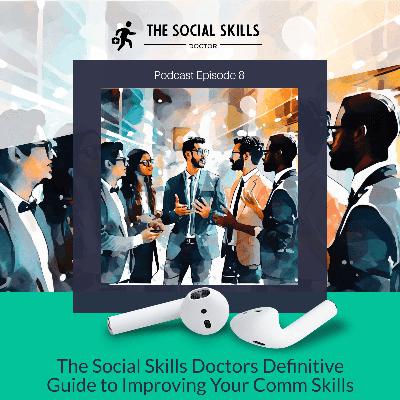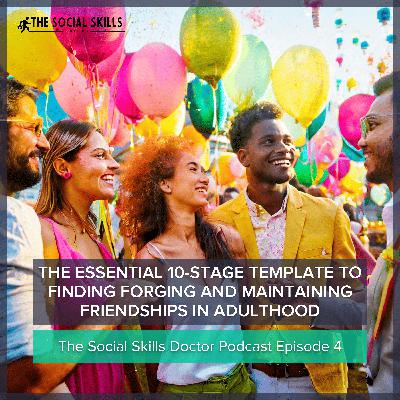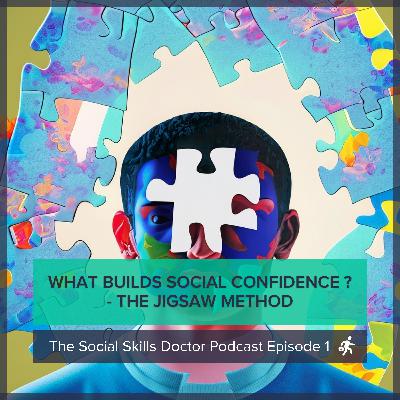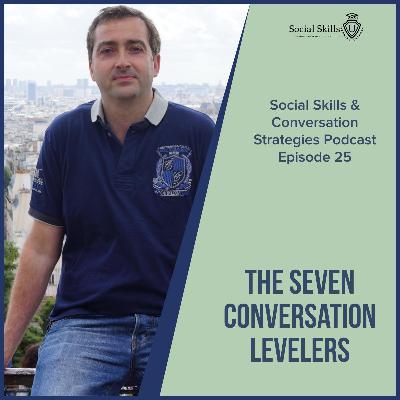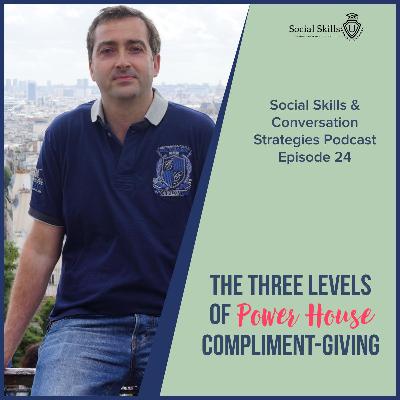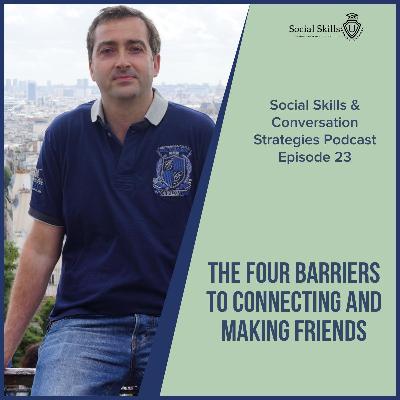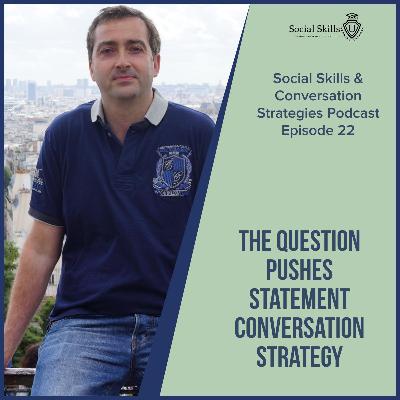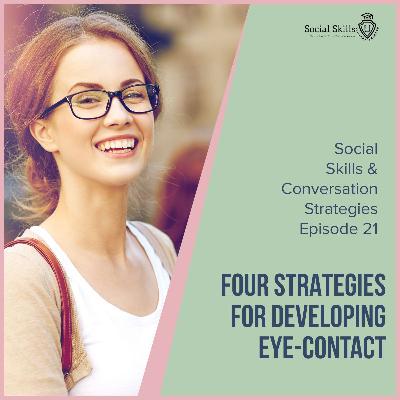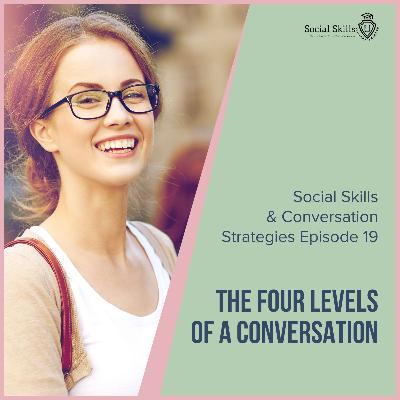The Three Golden Elements of a Boss Conversationalist - Anyone Can Learn
Update: 2024-01-15
Description
The Three Golden Elements of a Boss Conversationalist That Anyone Can Learn
Imagine, with just three shifts to your conversation game and you could increase your presence and conversation mastery by 90%. That’s not fantasy, empty air, or a promise only for those that can already talk – In fact, if you can talk, then you probably need to hear this the most…
Welcome to a new episode from the social skills doctor with me, Richard gray, where we will be covering the three golden elements of a conversation. Unless you actively desire to ex-communicate yourself from society and live off grid, then there can be no doubt about the benefits of being able to communicate at a good level with your fellow humans.
The higher the level of communication you can operate at, the more abundant will be the opportunities that fall to you in the form of better relationships, career advancement, and financial security. There really is everything to play for, and time is not waiting around, so lets begin the journey today...
Understanding the Art of Conversation
Conversations are not just about talking; they are an art form that can enhance both your personal and professional life. But wait!!! If it's an art form, don't you have to possess at least some natural talent for it?
Sure you do... and you DO. As a baby did you not have a natural talent for persuading adults to feed you, entertain you, and love you?
There's no question you could and can communicate, but if that talent got supressed or starved of development on your journey through childhood, that doesn't mean it doesn't still exist within you.
Understanding the Difference Between Talking and Conversing
Many people mistake talking for conversing, and while talking involves expressing thoughts and sharing information, conversing goes to the next level with active engagement. The real difference between the two is where your attention lies.
You might think of it like a scale of one to ten. A person occupying number one on this scale will be someone who talks with little awareness of whether the other person is engaged and wants to hear their latest monologue. When they are not speaking their attention is mostly in their head, waiting to get out their next anecdote or amazing insights.
A person at ten on the scale while talking, will be aware of the other persons body language, whether they are interested and following along, or whether they have entered waiting mode and want to start speaking themselves. When the other person is speaking, our ten will have their attention fully on what they are saying, and not in their own head.
The Three Key Tips to Become a Better Conversationalist
In order to reawaken your natural gift for conversing, and elevating yourself to a higher level conversationalist, all you need do is increase your numbers on the three key elements that make up a good conversationalist.
1. Active listening
This is the number one key element and tip for becoming a great conversationalist and means giving your full attention to the speaker without interruption, or thinking about what you will say next.
Yet because there can be so much noise and thought distraction in our own heads, many people cannot stay focused long enough to actively listen. This means if you can master this key element, your conversational game will leapfrog most people around you.
If you have any doubts about this lets consider it in terms of a metaphor...
If a conversation were a game of tennis, then being trapped in your own head thinking about your response, instead of listening, would be like playing blindfolded. However, when you can play using active listening, you see the ball coming, from which angle, and at what speed.
The point of this metaphor is to illustrate that active listening equips you with more information to help you craft a successful return. But that's only half the story...
What if you are playing with active listening but the other person isn't? It can get frustrating right? The other person is not really listening, they are distracted, or they cannot stop themselves talking before you have finished. It can make you feel disrespected and invisible.
Alas, you cannot point this out, at least not without putting the other person on the defensive and creating another barrier. So what can you do? Control your emotions and don't be tempted to descend to a lower communication level to match them. Set an example and eventually they will raise themselves to your level.
2. Questions questions questions
Don't take this to mean you should be interrogating the other person with a flood of questions, what I’m saying in my own delightfully abstract way is that there are three different types of question.
- The closed question that needs only one or two words to answer. It's an ice-breaker that can be used to test the waters with another person and determine if they are open to talking more. You can use their body language, their tone of voice, and the words they choose, to reach your conclusions on this.
- The open question. This needs a fuller response such as giving some information or thoughts in order to answer the question. Some will not want to answer but may be too polite to say so, in which case you may get a politician style response that doesn't answer the question.
- The story question. This should get the longest response because to answer this question they need to tell a story. An example of this would be if you asked someone to tell you how something began, such as a career path, a hobby, playing a musical instrument etc.
If you have nailed your active listening, the right type of question to ask, and in relation to what, should automatically reveal itself. For instance, the other person tells you they enjoy painting. You can now choose to go to an open question and find out what type of painting, or a story question to find out how they got into painting in the first place.
Of course, questions go both ways, and make no mistake, there is just as much (if not more) art to answering questions as there is to asking. Consider how you currently answer a question with the following example...
The question is a straight forward 'where are you from?' How would you answer? You have probably already identified this as a closed question that a one word reply will satisfy. But what can the other person do with that answer if they are not familiar with your place? Unless they push you for further information then the line of conversation is as closed as the question itself.
Now what if you answered the question with some extra kindling information such as a few facts about the place? Is your place well-known for something? Are there any famous people from there? You get my point?
By adding some extra info to your answer, you become more interesting and you make it a lot easier for the other person to find their response. Imagine that? Talking to you is now becoming easy, and people like easy :)
3. Self-Congruence
What does this mean exactly? Well in our previous conversation example we considered how to respond to a simple question like 'Where are you from?' The act of adding extra information to your response gave the other person more options in how to keep the topic going.
But wait! you cannot know in advance what questions might get thrown at you right? So how can you always respond with extra information? This is where self-congruence comes in. Nearly any casual conversation will revolve around ten common topics, so if you know yourself well in these ten topic areas then it becomes easy to add an extra sprinkle of colour to any answer.
What form might this extra kindling information take? It was easy with places because all we need to know is a few facts about our home town, or country if you are abroad. But we can expand kindling information to include likes and dislikes, opinions and beliefs, as well as straight up facts.
Lets put it to the test with another example in the topic category of TV and Movies. What is your favourite movie?
If you have shyness or anxiety, it's entirely possible that in the moment, you may not even be able to think of any movies, let alone which is your favourite. So this conversational area may never come to life if you are not self-congruent, or can't include any kindling to fan the flames of conversation to life.
But again, how would you respond if you knew yourself and could answer? If you were to ask me my favourite movie, I might tell you it's Robin Hood Prince of Thieves, or Highlander, or The Shawshank Redemption. Then I could tell you a few facts about the movie such as who is in it, who sung the movie theme song, or who wrote the movie etc.
Another common conversation topic is food and drink. All you have to do is take a mental journey through the topic and ask yourself questions such as what your favourite food and drinks are, your favourite restaurant, what your speciality dish is for cooking, where you learned to make that dish etc.
An Introduction To Conversation Hurdling
Conversations are like roads, one has potholes, cracks, and road hogs, the other has awkward silences, disagreements, and people who want a
Comments
In Channel

